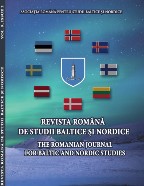The family tree – a challenge for multicultural learning: some aspects of Swedish, Serbian and Bulgarian kinship terminology
The family tree – a challenge for multicultural learning: some aspects of Swedish, Serbian and Bulgarian kinship terminology
Author(s): Sabira Ståhlberg, Dorijan HajduSubject(s): Language studies, Language and Literature Studies, Foreign languages learning, Applied Linguistics
Published by: Asociatia Romana pentru Studii Baltice si Nordice
Keywords: Bulgarian;cultural comparisons; cultural patterns; family structures; Finland-Swedish; kinship terminology; language learning; multicultural learning; multilingual learning; Serbian; Swedish;
Summary/Abstract: To discover the essential differences in cultural and linguistic patterns of a certain society, we need to look no further than to the most common relations of all – those between family members. When studying, working and living in, or for instance marrying into another culture, we must not only learn, but also acquire and utilise a whole new set of relationships and terms in order to be able to function and communicate. Without this knowledge we will quickly encounter a multitude of social difficulties in the other environment. On a deeper level, if we follow the assumption that a language is the mirror of its culture, and that language also influences culture, the linguistic terms designating family relations present a number of interesting phenomena, such as: which relations occupy the centre of importance in the society; the concept and understanding of a core family; which family relations are considered “worth” having a term for, and thus meaningful to keep up; the relations after a crisis, for instance a divorce; and several more, including the transfer of family relations to friendship and business contacts.This qualitative pilot study discusses some important aspects of family relations from the perspectives of Swedish-language (Sweden and Swedish-speakers in Finland) family terminology, in comparison with Serbian and Bulgarian. The study also includes a Serbian-language survey about kinship terms, and it raises questions about further research into cultural and social patterns and connotations reflected in kinship terminology. Social and cultural differences specifically between the Serbian and Swedish spheres are highlighted; the Bulgarian and Swedish-speaking terminologies in Finland are used here mainly as references and for comparative purposes. The study combines different scientific fields in mapping out some aspects of cognitive, social and cultural patterns. It emphasises the importance and necessity of multilingual and multicultural learning instead of foreign language and culture learning, and shows some of the pitfalls and possibilities students of languages and cultures encounter when learning new kinship concepts and terms.
Journal: Revista Română de Studii Baltice şi Nordice
- Issue Year: 13/2021
- Issue No: 1
- Page Range: 95-126
- Page Count: 32
- Language: English, Romanian

